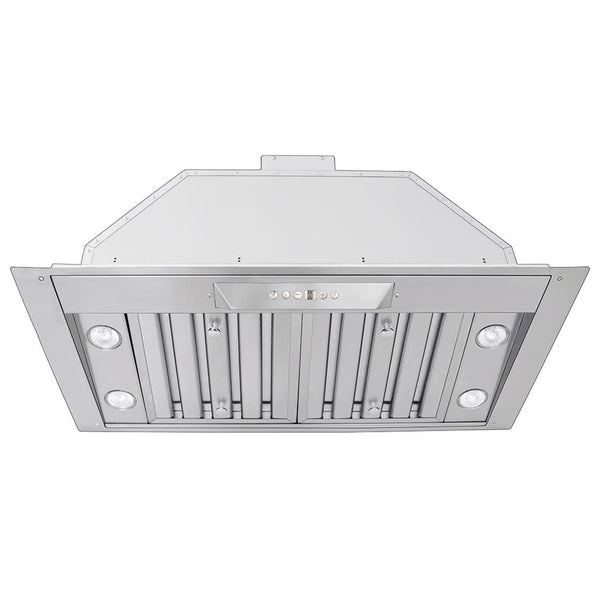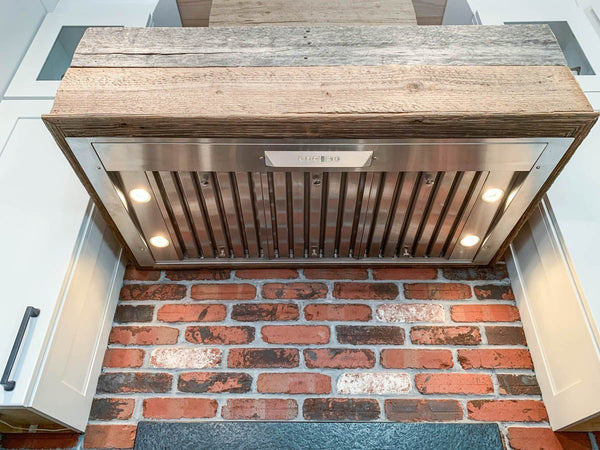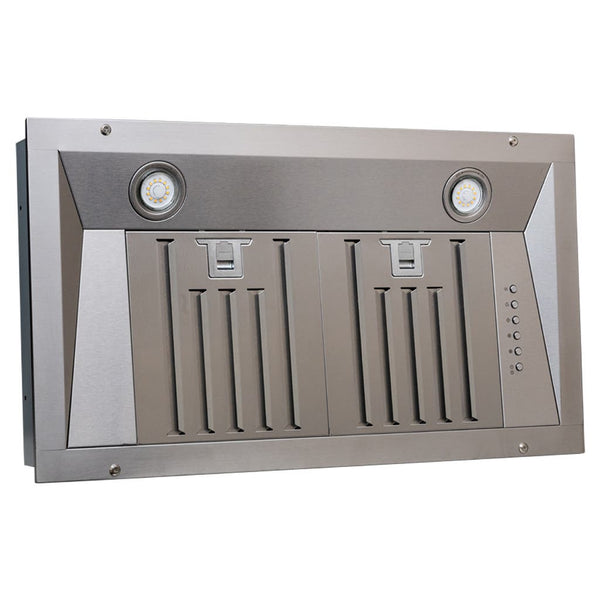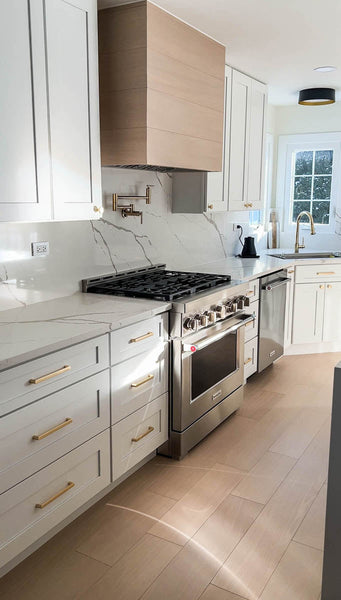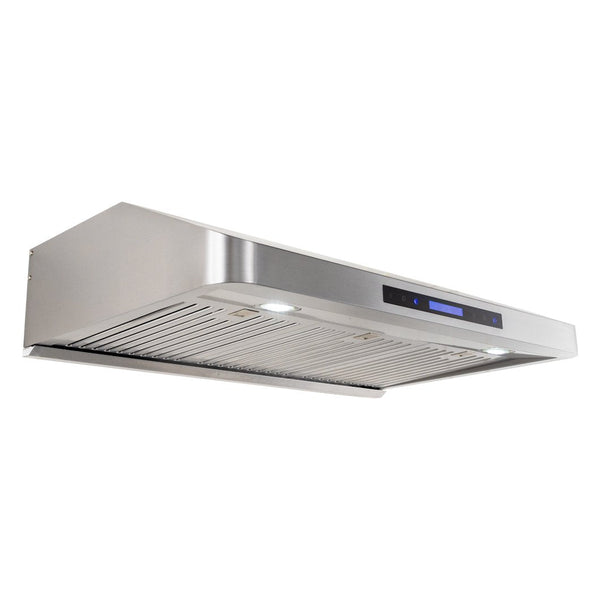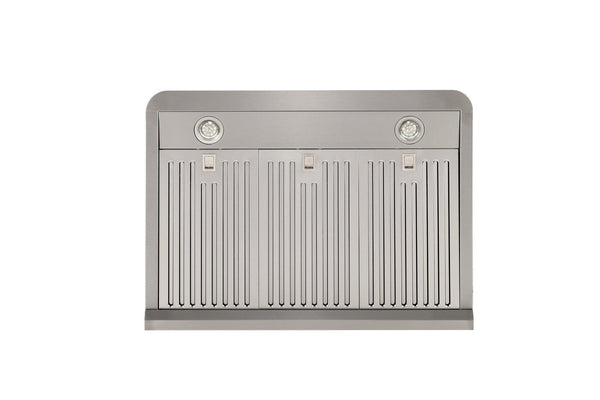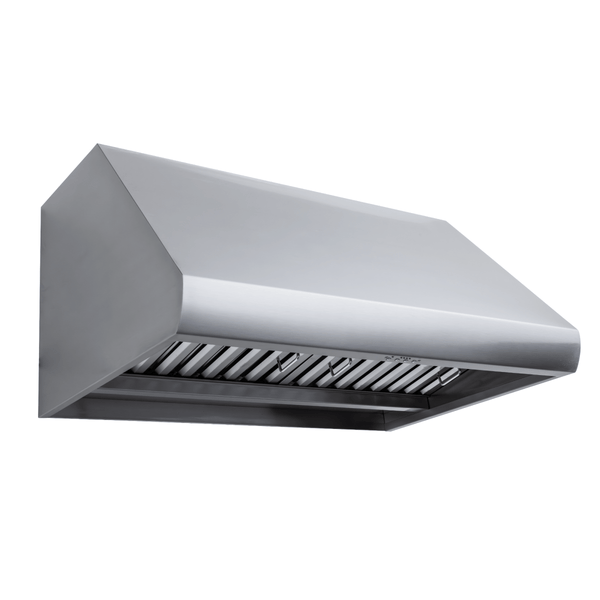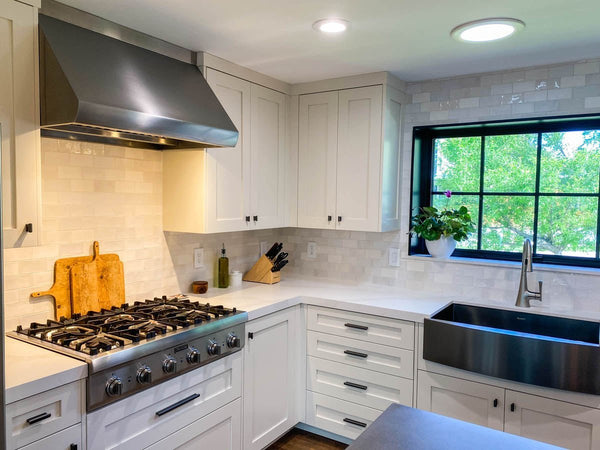Table of Contents
If your vent hood sounds like a jet engine taking off every time you cook, the problem might not be the hood itself: it could be your ductwork. Many homeowners and contractors throughout the United States don't realize that improper elbow placement and duct run configuration can dramatically reduce performance and increase noise levels in your ducted range hood. Let's dive into why proper range hood venting matters and how to get it right.
Use Our Calculator to Plan Your Installation
We've created a comprehensive calculator tool that takes the guesswork out of planning your range hood duct installation. Whether you're installing a wall cap or roof vent, simply input your hood's CFM rating, planned duct size, number of elbows, and duct length, and you'll instantly see:
-
Your effective CFM after all penalties
-
Whether your configuration is optimal, acceptable, or problematic
-
Expected noise level increases
-
Specific recommendations for your setup
-
Warnings if you're exceeding recommended limits
Need Help with your specific installation? This calculator works for cabinet range hood, island range hood, and other configurations.
Range Hood Duct Calculator
Calculate your effective CFM and optimize your range hood ducting layout
Your Range Hood Setup
The Straw Example–Airflow Basics
Think about drinking through a straw. When the straw is straight, liquid flows easily. But add a bend or two, and suddenly you're working much harder to get the same amount of liquid. Your exhaust duct works exactly the same way. With ducting bends, it can dramatically reduce the effectiveness of your stove hood and compromise air quality in your cooking area.
The CFM (cubic feet per minute) rating advertised for your range hood is based on ideal conditions with straight air duct runs. Every turn, bend, or elbow you add creates resistance that reduces airflow, increases noise, and can even damage your hood's internal components over time due to back pressure—something you'll never experience with ductless range hood systems that use charcoal filters, though those have their own limitations.

The Back Pressure Problem
When your ventilation duct creates too much resistance, something has to give. That "something" is usually your range exhaust system's internal components. Back pressure occurs when air can't escape fast enough through your exhaust fan, forcing the motor to work harder than designed.
Signs of excessive back pressure:
-
Motor runs hot to the touch
-
Unusual vibrations or rattling
-
Decreased performance over time
-
Premature motor failure
-
Grease building up inside the hood and on baffle filters
This is why we emphasize proper range hood ducting—we've seen expensive range hoods fail prematurely simply because of poor home improvement decisions that seemed minor at the time. Whether you're venting through an exterior wall or roof cap, proper installation is critical.
18-24 Inches Rule
Here's a rule that surprises many people during range hood installation: You need 18-24 inches of straight duct immediately after your exhaust hood before introducing your first elbow. This isn't just a suggestion—it's critical for performance and noise control, whether you're working with rigid rectangular duct or round configurations.
Why, you may ask? Your range hood fan needs space to establish smooth, organized airflow from your cooktop or cooking surface. When you introduce a turn too quickly, the air becomes turbulent, creating that loud whooshing or roaring sound. That straight section acts as a transition zone, allowing air to stabilize before it needs to change direction—this is fundamental kitchen design for proper kitchen exhaust systems.
What happens if you skip this step:
-
Significantly increased noise levels (often 2-4 sones louder)
-
Reduced CFM performance
-
Potential long-term motor strain

The Two-Elbow Rule (And Why You Shouldn't Break It)
Your venting system should have a maximum of 2 ninety-degree elbows. Each elbow should be preceded by 18-24 inches of straight duct—never use duct tape to force awkward angles or connect flexible ductwork at sharp turns.
Each 90-degree elbow costs you:
-
5 feet of equivalent duct length from your maximum 30-foot budget
-
Approximately 5% of your CFM rating
-
About 2 sones of additional noise (if you don't have proper straight duct before the elbow)
So with 2 elbows, your maximum recommended duct run drops from 30 feet to just 20 feet (30 - 10 = 20).
Real-world example: You purchase our PLJW 129 with 900 CFM. You plan to use 15 feet of duct with 2 ninety-degree elbows. Here's what actually happens:
-
Starting CFM: 900
-
After 2 elbows: ~810 CFM (10% loss)
-
Noise increase: +4 sones (if proper straight duct isn't installed before elbows)
-
Effective max duct length: 20 feet (you're at 15 feet, so you're good)
The key to minimizing noise is ensuring you have those critical 18-24 inches of straight duct before each turn. This allows the airflow to stabilize and significantly reduces turbulence noise.
Duct Size
When you add elbows to your system, upgrading your ductwork sizes becomes even more important. Larger diameter ducts have more volume, which means air molecules have more space to move around obstacles with less resistance. This is true whether you're using rigid metal ducts, semi-rigid ducts, or flexible ducts (though we strongly recommend rigid for HVAC ducting applications).
General sizing recommendations:
-
600-800 CFM hoods with elbows: Minimum 7-inch duct
-
800-1000 CFM hoods with elbows: Minimum 8-inch duct
-
1000+ CFM hoods: Always use 8-inch or larger, even without elbows
Important caveat: Before upgrading duct size, confirm with us that the larger duct will fit within your range hood chimney. Not all chimneys accommodate oversized ducting. Also always refer to your install guide and spec sheet—call us with any questions you may have. For help, contact us using your email address or search our site (just add items to your shopping cart and complete checkout—you can always reach us before finalizing). We can look up installation specs using your ZIP code and provide personalized recommendations.
Quick Reference Guide
7 Golden Rules for Range Hood Ducting:
-
Install 18-24 inches of straight duct immediately after the hood
-
Limit yourself to 2 ninety-degree elbows maximum
-
Provide 18-24 inches of straight duct before and between each elbow
-
Choose smooth rigid ducting over flexible ducting
-
Consider upgrading duct size when using elbows with high-CFM hoods
-
Stay within the 30-foot maximum total duct run (minus penalties)
-
Verify that larger ducts fit your chimney before purchasing
Pro tip: If you're upgrading from a range microwave to a new range hood, make sure to evaluate your existing ductwork—microwaves typically require much less CFM than dedicated range hoods.
Contact Us
While our calculator provides excellent guidance for standard installations, some situations require direct consultation. Don't let confusing search results mislead you—get expert advice directly from us.
Always contact us if you have:
-
More than 2 ninety-degree elbows
-
Unusual ducting configurations (multiple directional changes)
-
Duct runs approaching or exceeding 30 feet
-
Questions about whether larger ducts will fit your chimney
-
Complex installations involving multiple stories or long horizontal runs
-
Questions about venting to an outside vent or wall cap vs. roof vent
-
Concerns about integrating your hood with other features like LED lighting
We'd rather help you get it right the first time than deal with performance issues and expensive reinstallations later.
Ready to plan your installation? Use the calculator above to input your specific configuration, or contact our team for personalized guidance on complex installations. Check out our Best Seller models for proven performance in real-world installations across the United States.

